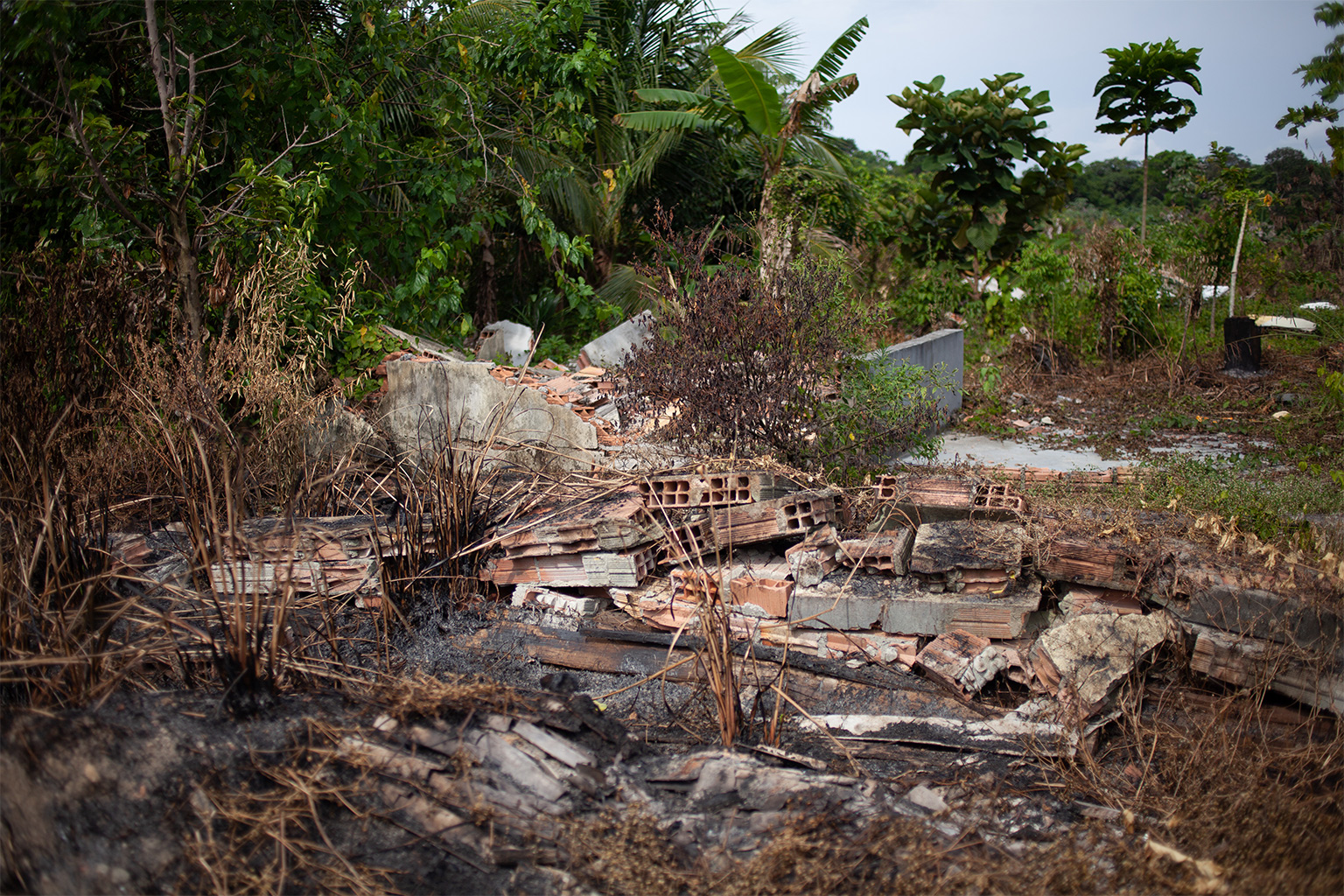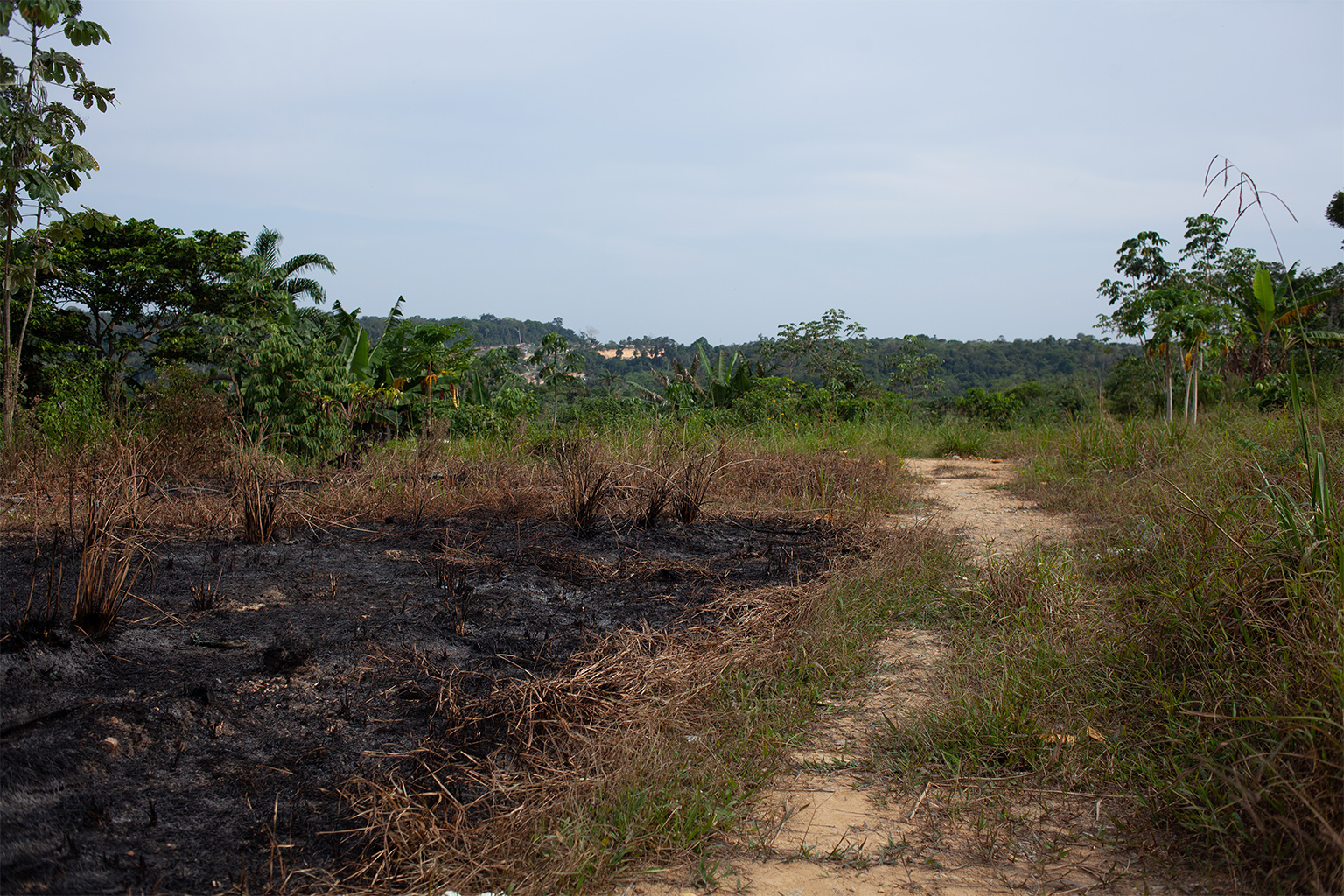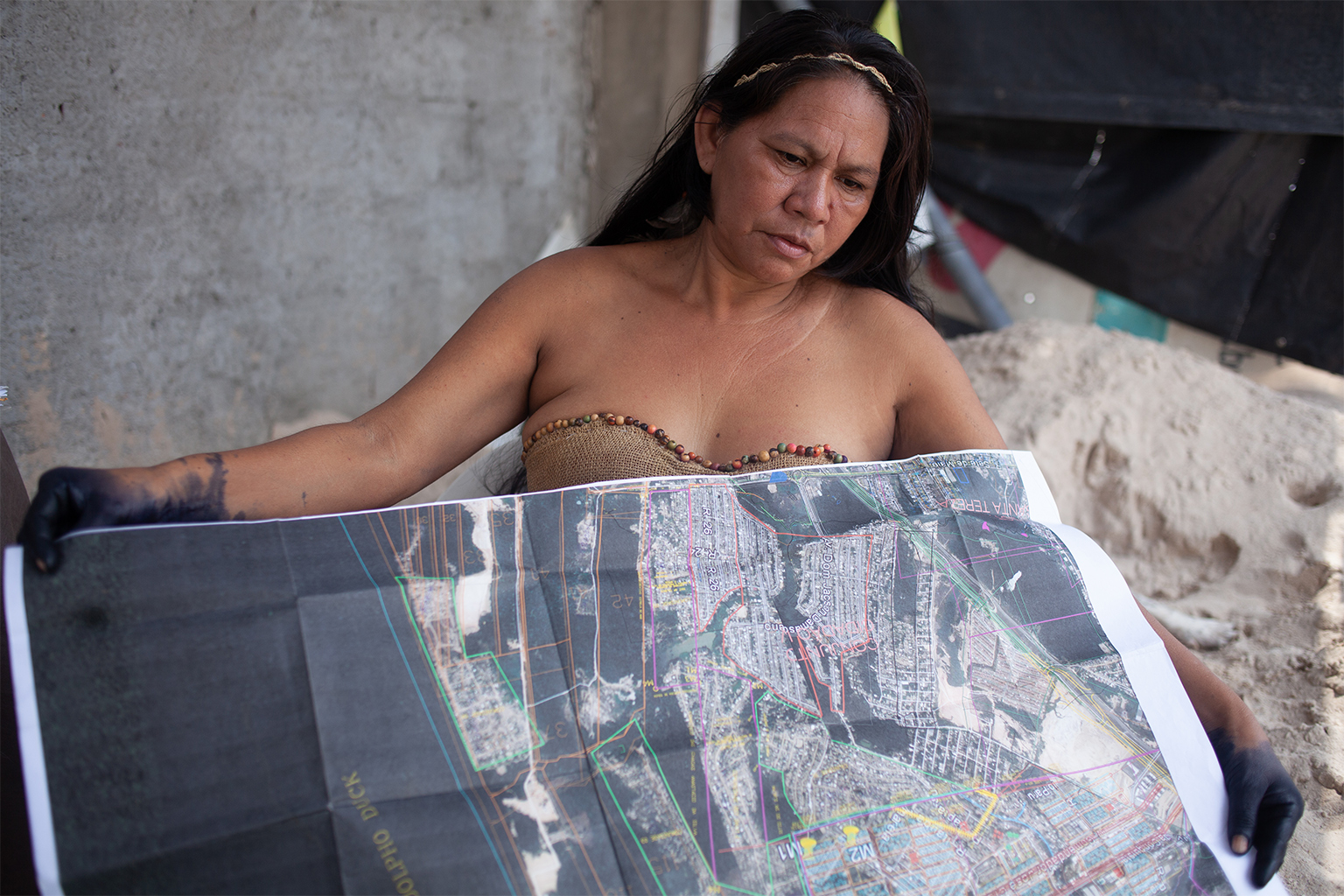- Some 2,260 families, many of them Indigenous, were displaced in March 2020 when authorities dismantled the Monte Horebe informal settlement on the outskirts of Manaus, in the Brazilian state of Amazonas.
- Two years later, many of the displaced residents continue to struggle with precarious housing, deepening poverty and the ongoing COVID-19 crisis, Indigenous leaders say.
- The Indigenous community is now fighting to reclaim the Monte Horebe settlement, asking a court to order authorities to compensate residents and allow them to return to the area.
- Informal settlements provide a lifeline for vulnerable Indigenous people forced to cities in search of employment, education or health care, but a crackdown by the authorities on these settlements threatens Indigenous people’s right to housing, community leaders say.
MANAUS, Brazil — As she walks through the rubble, Yawaratsuni Kokama steps over loose bricks and piles of broken tiles, her eyes welling up. From time to time, she stops to pluck a ripened mango from a tree or yank a cassava root from the ground.
“This is where our community garden used to be. And, over there, that was the school,” Yawaratsuni, the cacique, or Indigenous chief, of her community, said as she pointed to a nearby plot of land being swallowed up by the Amazon rainforest surrounding it. “Now all that’s left is bush.”
Until recently, this vast stretch of land was the site of Monte Horebe, an informal settlement on the outskirts of Manaus, the sprawling capital of Brazil’s Amazonas state. The makeshift community was once home to 2,260 families, including hundreds of Indigenous people from more than 30 different ethnicities, according to data from the Amazonas state government.


Monte Horebe emerged in 2015 when squatters cleared and occupied a patch of rainforest about 20 kilometers (12 miles) from the center of Manaus, according to Indigenous leaders. Like other informal settlements scattered at the margins of the city, it offered much-needed housing for low-income families, including hundreds of refugees from Haiti and Venezuela.
But all that changed when state authorities moved to dismantle Monte Horebe in March 2020, evicting the residents and bulldozing the humble homes they had built, according to community leaders. Even though residents had previously been promised land titles, authorities said the settlement had become a hive of drug trafficking and had to be cleared out.
“They said it was full of bandits,” said Yawaratsuni, known to most as Bia. “But it wasn’t. It had its problems like any place. But there were fathers and mothers and families living here, who were realizing their dreams.”
The evicted residents were supposed to be housed in a nearby government housing facility. But Indigenous leaders say many fell through the cracks, ending up homeless just as the COVID-19 crisis was deepening in Manaus, one of the cities worst hit by the pandemic.
In Monte Horebe’s place, state authorities planned to build a school and a public security facility, although those plans were derailed by the pandemic. Nearly two years later, the patch of land where the settlement once stood remains bare, save for the rubble of the demolished homes.
In February 2021, a group of residents tried to reoccupy Monte Horebe, but they were stopped by the authorities, according to the Amazonas state government. Yet Indigenous residents say they are still fighting to return to the settlement. The community is now asking asking a court to order authorities to compensate residents and allow them to return to the area, according to documents seen by Mongabay.
“With a little compensation, we would be able to rebuild [it] again,” Bia told Mongabay. “People just want a slice of land to call their own, to replant what they had before.”
Amazonas state officials did not respond to Mongabay’s requests for comment.


Precarious housing
Before it was torn down, Monte Horebe was like the dozens of other illegal settlements scattered around Manaus. It lacked running water and paved roads, but it had two schools and a health clinic. Every Wednesday, Indigenous nurse Vanda Ortega checked up on residents.
“It was a community, where people returned to their culture and way of life,” said Ortega, a member of the Witoto Indigenous group. “You had people who invested what little they had in that tiny house, in that little shack. And from one moment to the next, it was destroyed.”
Monte Horebe was among the biggest informal settlements in Manaus, born out of the necessity for affordable housing after another illegal settlement, Cidade das Luzes, was dismantled by the authorities in 2015. Faced with soaring inequality and poverty, low-income families often rely on these settlements to survive and cope with the rising costs of urban living.

Indigenous people are frequent residents of such informal communities, often arriving to the city after being forced out of their territories by a lack of health care, employment and education opportunities, said Ortega, who lives in the Parque das Tribos, another informal settlement occupied by Indigenous people.
“Our ancestors already inhabited this land — and they were expelled,” she told Mongabay in an interview at the Monte Horebe Indigenous community association center. “Today, in many of our territories, the living conditions are extremely difficult, which forces our people to leave their territories and return to the city.”
But authorities continue to crack down on such informal settlements, arguing that their location at the margins of the city makes them perfect breeding grounds for organized crime, Indigenous leaders say. This creates deep uncertainty for Indigenous people living in these communities, Ortega said.
“With no document or guarantee of land rights, they are forced to live with this fear that they might not be able to stay,” she said. “It’s very, very painful.”
As Indigenous territories come under attack elsewhere across Brazil, such urban evictions are yet another assault on Indigenous people’s right to housing and territory, said Josué Kokama, a cacique living in Cemitério dos Índios (Indigenous Cemetery), another settlement on the outskirts of Manaus.
“Today, they are taking away the rights that are given to us by the Constitution,” he told Mongabay in a phone interview. “Because they think the Indigenous should only stay in the forest, in their villages. But in the middle of the forest, there’s no university. Do you think there, the Indigenous will get a good education?”
Cemitério dos Índios, home to more than 2,000 families of various Indigenous ethnicities, is also in the authorities’ crosshairs. In 2020, a federal judge ruled it should be dismantled, saying the settlement sits atop an archaeological site that’s being damaged by the occupation, according to local reports. The community members say they have a right to the land of their ancestors and make the case that they’re preserving the ancient burial site.
Such evictions fall short of addressing the lack of housing for Indigenous people living in Brazil’s urban centers, said Josué, noting that those expelled from one community end up in another illegal settlement elsewhere in Manaus.
“I see the situation of my people today — and it’s a deeply precarious situation,” he said. “People today are struggling and they don’t have a roof over their heads. So we keep occupying and fighting for our basic rights.”

Forced out
Many of those evicted from Monte Horebe were forced to move to other illegal settlements or into overcrowded rented apartments, Indigenous leaders say. Without land to grow food, some wound up in hunger and rampant poverty.
The eviction wreaked havoc on the life of Neila Santos dos Santos. With the demolition of Monte Horebe, she lost the home she shared with her three young children and was forced to move into her mother’s cramped apartment in a nearby neighborhood on the fringe of Manaus.
“I was forced out of my house — they took all that we had worked so hard to build,” dos Santos, who is a member of the Kokama Indigenous group, told Mongabay in an interview at Monte Horebe, a few meters from where her house once stood. “My son grew up there — and he still asks me, ‘What happened to my house, what happened to my land? Where is my street?’ But it’s all gone.”
Before the eviction, her family survived on the income she brought in as a seamstress and the food they were able to grow in the community garden. Evicted residents like dos Santos were promised aid of 600 reais ($108) per month, about half of Brazil’s minimum salary, but she says she and many others never received any help.
“In Monte Horebe, we didn’t have electricity, we didn’t have the infrastructure from the state,” she said. “But we had a home, we had our vegetable garden. We weren’t in need in the same way that we are now. To this day, I haven’t gotten any help from the state.”

With their community fragmented and their link to the land severed, the Indigenous residents’ very way of life came under threat. And with the pandemic raging, the eviction left them even more vulnerable to the virus, community leaders say.
Brazil’s Indigenous population, many of whom live in remote or underserved areas with little access to health care, have been particularly hard-hit by the pandemic, according to Instituto Socioambiental (ISA), a nonprofit that advocates for the rights of Indigenous and traditional peoples. In Indigenous communities, communal living also means it’s nearly impossible to isolate family members infected with the virus, making it difficult to contain its spread, ISA says.
A study last year showed that COVID-19 was killing Indigenous people in Amazonas at higher rates compared to the general population. The spread of the Omicron variant in the country hit about 300,000 infections per day at the beginning of February, breaking previous records for daily infections, according to data from the Health Ministry. Under this new wave, the continued displacement of Monte Horebe’s residents may leave them even more vulnerable.
“Today, almost two years later, the Monte Horebe community has been abandoned,” said Bia, the cacique. ”And we are asking for help … Because they took this land away from people who had nowhere to go.”
Banner image: Yawaratsuni Kokama, an Indigenous chief, or cacique, points to the patch of land where a community garden used to stand, in the Monte Horebe informal settlement on the outskirts of Manaus, Amazonas state. The community, which was home to some 2,260 families, was dismantled by authorities in March 2020. Image by Ana Ionova for Mongabay.
FEEDBACK: Use this form to send a message to the author of this post. If you want to post a public comment, you can do that at the bottom of the page.
